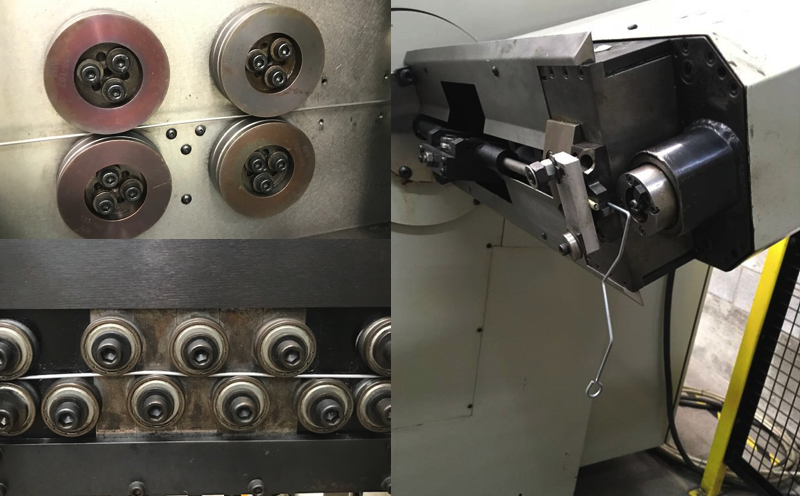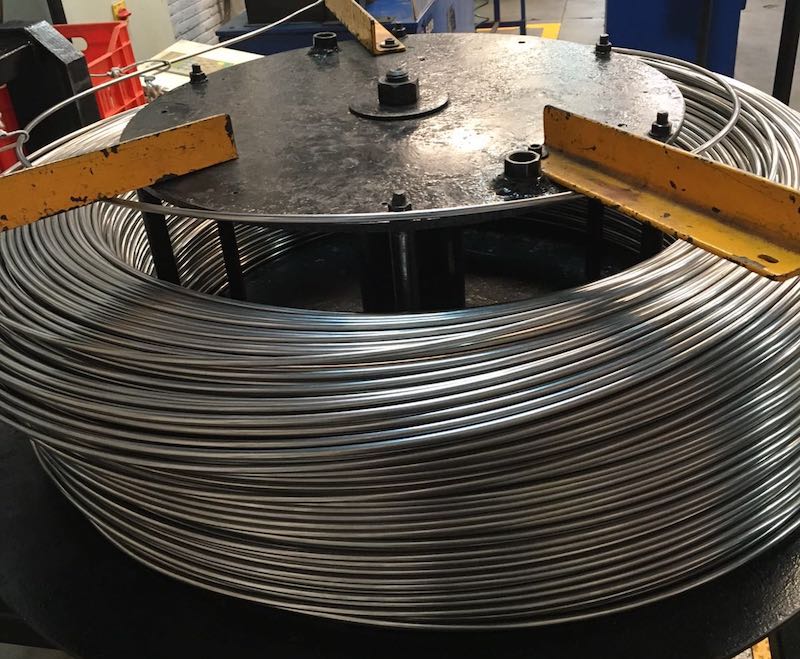Wire Forming FAQs
In the realm of auto part manufacturing, shaping wires into precisely formed wire configurations is a widely used method of production. Achieving the perfect bend is a balancing act – it involves going beyond the wire’s yield strength without exceeding its tensile strength. This way the wire obtains the desired shape without breaking or reverting to its original form.
If you’re looking for more information on wire forming, it’s best to gain as much knowledge as you can about the method. Read on to learn more about all things wire forming.
Differences Between Wire Forming, Hand Bending, And Air Bending

Wire forming can be accomplished through various techniques, the 3 most commonly used include wire forming, hand bending, and air bending. Let’s explore these 3 methods to get a better understanding of the pros and cons of each.
- Wire Forming refers to the process of shaping wires into specific designs, such as transforming a wire into a spring. This term often denotes an automated process facilitated by machinery. At Intran, we employ CNC (computer numerical controlled) wire benders capable of manipulating wires up to 1 1/2 inches in diameter. This means we’re able to rapidly produce large wire quantities. This process involves a computer, a robotic arm, and servo-driven rollers working together to bend the wire into programmed shapes with high precision and versatility. This method allows for formed wire bends in any direction and the creation of complex shapes like coils.
- Hand Bending represents a more traditional approach to wire bending, relying on manual effort. The process involves positioning a wire between a fixed pin and a movable roller pin. The moveable pin then manually rotates to bend the wire around the fixed pin. The fixed pin’s diameter determines the bend’s radius, making this method suitable for small-scale orders due to its labor-intensive nature and lower precision compared to automated wire forming.
- Air Bending is similar to hand bending. The primary difference being the use of air-powered assistance for the roller pin, which reduces the manual effort required. This air-powered aid allows for bending larger diameter wires than possible with purely manual techniques. Similar to hand bending, air bending is best suited for smaller formed wire orders due to its semi-manual nature.
Understanding Wire Forming Materials

A diverse selection of material options is available for wire forming. Each material offers unique properties and advantages. Choosing the appropriate material is crucial for the optimal performance of your formed wire product. At Intran, we specialize in stainless steel and cold rolled steel formed wire products, but we also have extensive expertise in many other wire forming materials. The list below will explain the common materials used in wire forming and highlights their key features.
- Aluminum: Renowned for its flexibility, aluminum is perfect for formed wire parts requiring intricate shapes. Its lightweight nature and inherent corrosion resistance make it a preferred choice for applications where additional finishing is unnecessary.
- Brass: This copper-zinc alloy stands out for its corrosion resistance and appealing aesthetics, making it ideal for visually important applications and those necessitating excellent thermal conductivity.
- Bronze: Similar to brass but primarily a copper-tin alloy, bronze is valued for its corrosion resistance and electrical conductivity, often chosen for custom formed wire electrical springs.
- Carbon Steel: Known for its strength and shock resistance, carbon steel is cost-effective and suited for rigid components. However, it’s more challenging to bend and prone to corrosion.
- Cold Rolled Steel: Produced by mechanically rolling mild steel, cold rolled steel offers enhanced strength and a smooth finish, making it more malleable and weldable than carbon steel.
- Copper: Copper’s strength, flexibility, and non-magnetic nature, coupled with high electrical and thermal conductivity, make it indispensable for electrical applications and high-temperature environments.
- Nickel: Ideal for formed wire springs exposed to moisture or extreme temperatures, nickel boasts excellent corrosion resistance. While pure nickel is magnetic, its alloys typically are not, making them suitable for non-magnetic applications. Note, nickel alloys are not recommended for electrical conduction due to their resistance to electric currents.
- Stainless Steel: Available in various grades (e.g., 304, 316, 434), stainless steel is resilient against oxidation, chlorides, and extreme temperatures, making it a versatile choice for formed wire parts that are used in demanding environments. Unlike regular steel, stainless steel is non-magnetic.
- Titanium: Among the strongest metals, titanium is prized for its durability, elasticity, corrosion resistance, and high melting point, though its cost can be a consideration.
If you’re unsure about the best material for your project, our team is here to assist. Reach out to us for details on the materials Intran works with and get expert guidance in selecting the ideal wire forming material for your needs.
What Makes Wire Forming A Preferred Method Of Production?
For medium to high-volume production, wire forming stands out due to its automated nature, requiring no additional tooling and ensuring rapid, precise bends. This results in:
- Enhanced speed and precision, reducing processing time per part.
- Cost-effectiveness for larger volumes, offsetting initial setup costs.
- Consistent quality, minimizing the risk of human error inherent in manual bending methods.
Given the advanced equipment required for creating formed wire, partnering with a reputable manufacturer equipped with the latest technology is crucial. Intran prides itself on offering state-of-the-art wire forming services, and Mexico might just be the perfect destination for your needs.
Advantages Of Manufacturing Formed Wire Products In Mexico
The choice of your manufacturing partner’s location is pivotal, and for businesses in the U.S. and Canada, partnering with Intran in Mexico presents numerous benefits:
- Skilled Workforce: Mexico’s strong technical education system produces a high number of graduates in fields such as engineering and manufacturing, ensuring a pool of skilled labor.
- Proximity And Shorter Supply Chains: Mexico’s geographical closeness ensures faster deliveries, lower shipping costs, and reduced supply chain disruptions compared to distant international suppliers.
- Cost-Effective Shipping: Shipping from Mexico is generally more affordable, with the added flexibility of smaller order volumes compared to the full container loads often required by overseas manufacturers.
- Easy Factory Visits: With Mexico nearby, travel expenses are minimized, and the absence of significant time zone differences facilitates easier visits to your manufacturing partner.
- Competitive Labor Costs: Despite the high skill level, Mexico has some of the most competitive labor costs.
- Strong Intellectual Property Protection: Unlike some regions, Mexico has stringent intellectual property laws designed to safeguard your innovations.
- Commitment To Social Responsibility: Mexico’s labor laws mirror those of the U.S. and Canada, promoting socially responsible manufacturing practices. Intran also continuously invest in their facilities and workforce to continually deliver quality services.
- Certifications And Standards: Intran holds all relevant quality certifications and adheres to environmental, labor, and intellectual property standards.
Wire Forming From Intran
Now that you have a better idea of what wire forming is and how it’s accomplished, it’s time to seek the best manufacturer for your company’s formed wire needs. Intran is glad to answer any questions you have about the process. Contact us with any wire forming questions you have – we’re glad to help.
